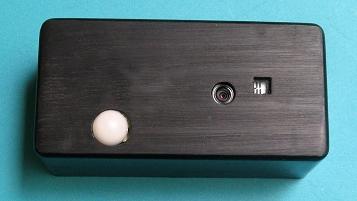Motion sensors are now sold in almost all household appliance stores. A motion sensor for lighting is used in everyday life, for example in entrances. Of course, did you pay attention to the lamps that light up when you approach them? This is one example of the use of motion sensors in everyday life, and there are many more such examples. A displacement or motion sensor is used in home and industrial alarms, they are in the schemes of robotization and automation, measuring the speed of an electric motor, etc. But besides industrial use, it is quite possible to find a motion sensor in everyday life. Moreover, if you make a motion sensor with your own hands, then knowing the scheme of its operation, you can use such a device to turn on or off any household appliances.
Let's look at the main parts of the product. The first thing you need to start with to make a motion sensor with your own hands is to provide it with power.
The power source must be safe in the first place, be as small as possible, and be designed for continuous operation under load. A standard power supply unit for charging batteries or any other with an output voltage of five volts is well suited for this purpose. Making a motion sensor with your own hands is quite simple, it does not require scarce or expensive parts.
Now we select a photocell, anyone is suitable for our purposes, its area does not matter, a little later we will find out why. Photocell cathode
connect to the positive terminal of the power source. Now the current limitation of the photocell, the rated current must flow through it, otherwise it will simply burn out. According to Ohm's law, we calculate the resistance value, and solder it to the anode output of the photocell.
Now, tuning resistance, 10 kOhm is enough, one of the terminals is soldered to minus power, the second to the free end of the current-limiting resistance. Now we assemble the emitter follower circuit using a transistor with an npn junction. Its base is sealed at the free end of the tuning resistance. The collector is directly soldered to the positive terminal of the power source, and a small power relay with a nominal voltage of five volts is included in the emitter circuit. The second end of the relay coil we solder to the negative output of the source. We collect the relay contacts according to the self-pickup circuit, that is, the first time the motion sensor is triggered, the relay pulls up and provides itself with power through its contacts.

Free relay contacts go to the load, such as lighting or a tape recorder, it all depends on your imagination. As you can see, making a motion sensor with your own hands is not difficult. The main thing in this case is not to overload the contacts, because the relay used in the circuit is low-power. But in the form of a load, we can use another relay, with more powerful contacts, which will provide you with the load that you want.
To reset the device to its initial state, it is enough to interrupt its power supply for a short time. Connect a small, self-resetting switch to the power circuit . You can use a laser pointer as a radiation source, providing it with constant power from our source. Now it’s clear why the area of the photocell did not play any role, the radiation of the pointer is monochrome and the light beam will not change in area.